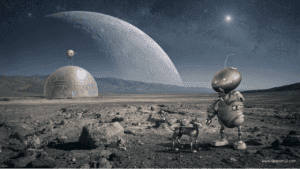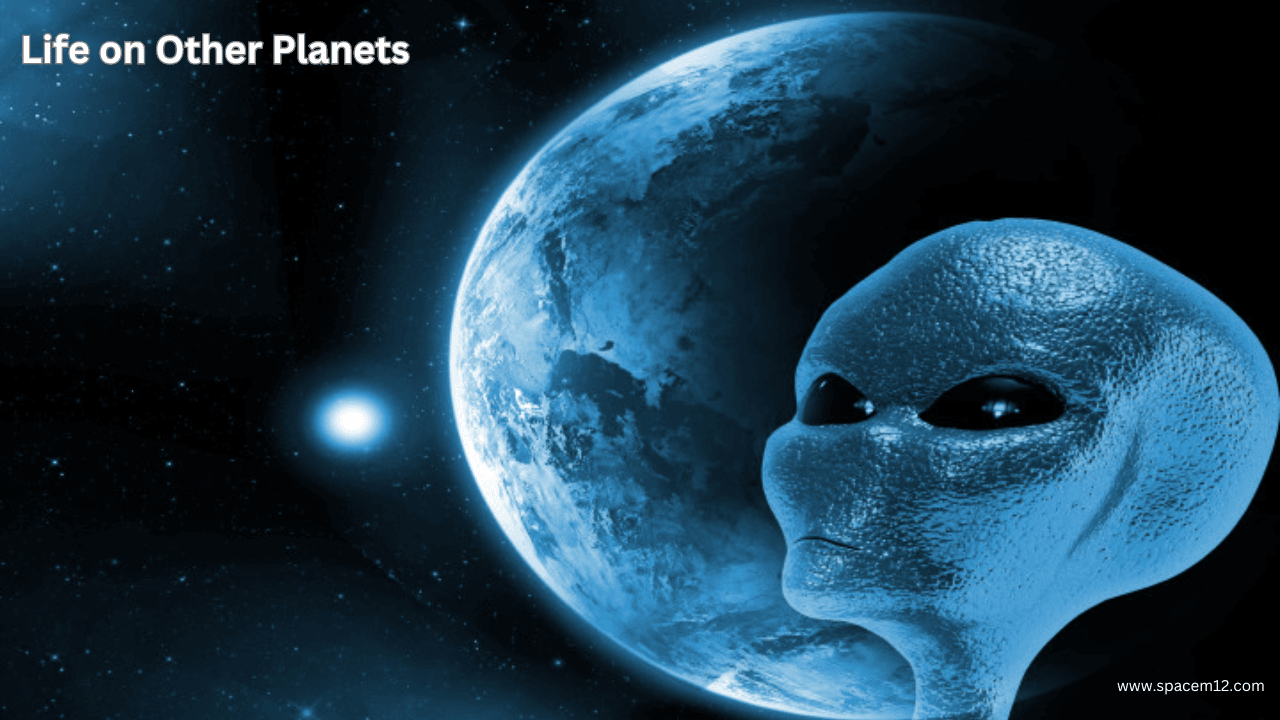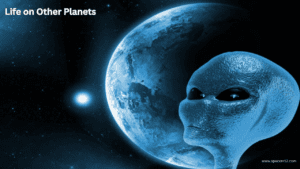Life on Other Planets: Is It Possible?
Life on other planets has long been a question for humans, making numerous scientific discoveries and, as fiction, a constant daydream. The deeper we explore in our solar system and out in space, the more we are interested in finding extraterrestrial life. Astrobiologists start searching the planets and moons surrounding us – such as Mars, Europa, and Titan – to look for any sign of liquid water and habitability.
These findings regarding the extremophiles, organisms that live in extreme conditions on Earth, have thus broadened where and in what conditions we consider to be life on other planets capable of thriving, and thus has brought about possibilities for life in environmental conditions previously considered inhospitable. Technologies, such as a space telescope like James Webb, afford one to look into the atmospheres of exoplanets from so distant, thus bringing prospects of biosignatures that could indicate alien life.
While the scientists remain excited over potential life on other planets, it is still far from easy. With an enormous universe, at our best efforts with the most powerful tools, we probably reach barely below what would really exist outside Earth.
<Click>
However, the road laid down by the Mars Perseverance rover and the icy moons soon to be explored can already dig up very significant discoveries. It would be a discovery of life on other planets, which would change all we understand so far of biology and evolution, and finally give us our place in the universe. And this is yet further progress that is engaged by this pursuit to seek other life beyond Earth. Curiosity is sowed, and this brings us further out into the cosmos into other unknown possibilities.
The Search for Extraterrestrial Life
Early Theories and Scientific Curiosity
When people first looked up into the night sky, everyone from the ancient Greeks to the Mayans found ways to include the cosmos in their mythology as possible places that could harbor their own beings or gods. Epicurus, a philosopher, wrote about the possibility of worlds outside of this one, which was widely ignited and sustained curiosity for several centuries. In the Renaissance, the invention of the telescope allowed astronomers like Galileo to study celestial phenomena in much more detail. This too opened up further questions concerning our universe. All these early theories paved the way for a burgeoning interest in extraterrestrial life, thus laying down the seed for further scientific pursuit.
As science progressed towards modern times, the quest for life on other planets gained momentum:. Astrobiology evolved from there into a distinct scientific discipline through technological advances and increased knowledge about extreme environments on Earth. The scientists then began to realize that life could actually exist in places that no one had ever believed before: deep-sea hydrothermal vents or acidic hot springs, for example.
This shift in mindset led scientists to believe that other similar ecologies must exist elsewhere in the solar system and indeed beyond. This discovery in the past decades has added fuel to the curiosity fire, with active researchers searching for traces of habitability in other worlds. Today, as humanity sends spacecraft to Mars and the icy moons of Jupiter and Saturn, it’s time to remind ourselves of the quest to know life on other planets once and for all.
Modern Efforts in Astrobiology
Modern astrobiological activities have emerged as a new milestone in understanding life on other planets. Indeed, the field has deeply grown on account of the dawn of the new technologies and research for the last several decades. Of course, NASA’s Mars rovers Curiosity and Perseverance are avant-garde missions that study the geology and climate of the planet, and hence that provides critical data regarding the possibility of past microbial life on the planet.
These missions involve high-tech instrumentation to analyze soil samples and look for evidence of organic compounds, and thus provide astronomers with some very critical clues about the kind of conditions that might have supported life on other planets in the solar system. Beyond Mars, astrobiologists work on the evolution of moons such as Europa and Enceladus, famous for their subsurface oceans, where life-advancing activity could be possible, making the scope wider.
It would need the team effort of scientists from various disciplines, namely biology, chemistry, and planetary science, to understand life on other planets. New techniques in searching, this time with new technology, such as advanced telescopes and spectroscopy, gave a new tailwind to exoplanet hunting. For instance, this success saw to the allowance of researchers to search for biosignatures-chemical markers of life-in the atmospheres of distant worlds.
It thus opens interdisciplinary probing: it not only lends a far deeper understanding of how to detect signs of life from extraterrestrial life but also clarifies how well life survives in extreme environments on Earth. Modern astrobiological research goes beyond an actual hunt for life elsewhere-it questions the assumptions that people have regarding what life is, its own concept of humankind’s place within the universe, and makes us think again about what it means to be alive.
What Makes a Planet Habitable?
The Goldilocks Zone
One of the most important concepts to explore life outside Earth is the Goldilocks Zone or habitable zone. That means some area around a star where temperatures are just right for liquid water to exist on a planet’s surface-not too hot and not too cold. The term “goldilocks” comes from the children’s fairy tale of Goldilocks, who finds porridge that is “just right.” As it applies in astrobiology, though, goldilocks is a term of relevance when it refers to regions of a planetary system in which there could be life on other planets-for all known forms of life require liquid water.
The search for exoplanets in the Goldilocks zone is an important part of present-day astrobiological research. Kepler-186f and Proxima Centauri b are found in the habitable zone of their star-a new hub of expectation for life on other planets. A planet’s location, though in the Goldilocks Zone, does not mean it can sustain life on other planets; its atmosphere as well as the geological activity and magnetic field of that planet among others determine that.
Scientists are refining their understanding of what the Goldilocks Zone consists of, focusing on differences among stars as well as conditions of a planet that would make it possibly support life. Every time we learn more about habitable zones around other stars, that question of are we alone in the universe draws closer to an answer.
Key Factors for Supporting Life
Exploration of life on other planets The search for life on other planets shall be developed with several critical factors underlying whether or not a planet can harbor life. Some include the issue of liquid water – often called the “universal solvent.”
Liquid water acts as a medium both in biochemical reactions and in regulating temperature and transport of nutrients. They now have more than enough evidence that there is water in the liquid and as ice, which forms on planets and moons, such as Mars, Europa, and Enceladus while exploring our solar system. The amount of liquid becomes considerably more potential for life on another planet as it is an essential ingredient of biochemical functions supporting life as we know it.
Besides the availability of liquid water, an atmosphere is yet another factor required by a planet to have life on it. A good atmosphere should permit critical gases in the atmosphere, including oxygen and carbon dioxide, to support respiration and photosynthesis, respectively. This helps stabilize the surface temperatures and shields the planet from harmful cosmic radiations.
However, appropriate temperatures are also to be considered; planets that are too hot and those that are too cold would prove to be inhibitory for the development and continuation of life. Besides those, magnetic fields and geological activity might also be factors that could contribute to habitability, forming protective environments for organisms and recycling necessary nutrients. By studying these critical factors, scientists expect to discover the conditions necessary for life on other planets, sending humankind off to another expedition of discovery on Earth.

Possible Candidates for Life in Our Solar System
Mars: Our Best Bet?
One of our closest bets in finding life on other planets within our solar system has indeed been Mars. Several reasons fuel this intrigue, as it is believed that the Red Planet once had conditions that may support life. Geological evidence has shown that, once upon a time, Mars was wetter and more hydrated than today, perhaps home to numerous rivers and lakes that could support microbial life. The NASA Mars rovers-Curiousity and Perseverance-keep poking about at the surface of Mars, scouring for samples of soil, among other things, and hunting for organic compounds: one sign of past life. With this finding, seasonal methane spikes, perhaps of biological origin, are something life on other planets might create on Mars.
With current Mars explorations underway, more evidence is surfacing about Mars’ climate and geology, and humanity is getting a clearer view of the prospect for the planet’s habitability. Much more complexity than scientists thought concerning past history reflects sites of ancient riverbeds with minerals that are associated with water and also subsurface ice. Future missions, for example, the Mars Sample Return mission, will retrieve samples of Martian soil and rock to be returned to Earth for detailed study.
And perhaps something there-the key to providing long-awaited definitive evidence for or against past or present life elsewhere in the universe. Hope springs eternal as it is the heart of astrobiology research. Thus, it is not a search for life elsewhere in the universe. It provokes a new way of thinking about the abundance and diversity of life and challenges us to reconsider everything we ever thought we knew about our own planet and the cosmos in general.
Europa and Enceladus: Oceans Beneath Ice
Of course, Europa and Enceladus are two of the most exciting objects being hunted for life beyond Earth, as they have oceans behind thick ice crusts. For instance, Europa is Jupiter’s largest moon but is believed to have an ocean existing under its icy crusting layer of surface-which contains as much water as over twice the total volume of Earth.
This moon had an ice shell warmed up by tidal heating caused by the gravitational pull of Jupiter and thus could potentially support microbial life. The currently planned NASA mission called the Europa Clipper will study this moon in great detail and investigate the chemistry of its ocean and its ice shell that might give crucial clues regarding extraterrestrial life.
For instance, Enceladus is one of Saturn’s moons that has recently been in the news: the geysers spewing forth water vapor and organic compounds into space attest to geysers as proof of an active subsurface ocean. Further analyses of samples carried back by the Cassini spacecraft in an earlier mission that discovered the plumes revealed that hydrothermal activities dominate on the ocean floor-a vital ingredient to support life on other planets.
This makes it quite an enticing environment for possible microbial life with nutrient-rich water and potentially lots of energy from hydrothermal vents. These two planets rank top among astrobiological research because they uniquely offer opportunities to understand the nature of environments outside Earth. But now, with these scientists poised to step foot on these planets, this may unlock even bigger final sources of information regarding life on other planets and can also further our understanding about the possibility of there existing life beyond our planet.
Titan: An Earth-Like Atmosphere
Titan is the largest moon of Saturn, already demonstrated to be the greatest interest in seeking life beyond Earth, with an atmosphere very similar to Earth’s and strange phenomena being found on its surface. Titan is unique in the solar system as having a significant kind of atmosphere, predominantly nitrogen but mixed with methane.
This dense atmosphere of gases encourages a greenhouse effect, though miserably cold by terrestrial standards, it’s sufficiently warm to sustain interesting chemistry. Liquid lakes and rivers of methane and ethane on the surface of Titan suggest a hydrology cycle not far removed from what exists on Earth, so leading scientists to conceive if life on other planets might thrive in places far removed from our own.
But the complex organic chemistry of Titan also presents some really interesting prospects for life. The chemistry in its atmosphere and at its surface might be like that on primitive Earth before life invented oxygen so, it is a test tube of how life would emerge under extraterrestrial conditions. The NASA Dragonfly mission would be targeted at exploring the surface and the atmosphere of Titan in detail, probing various landscapes of Titan, and look out for biosignatures.
The study on these unique characteristics of Titan and the interaction between its atmosphere and surface materials will prove to help scientists develop an insightful view of the possibility of life on other planets, with one step further to the extension of our concept of a habitable environment. In other words, Titan does not just challenge our assumptions of where in space to look for life but also reminds us of the tremendous power left within its universe.
Exoplanets and the Future of Life Detection
The Role of Space Telescopes
Space telescopes assume a vital part in propelling comprehension we might interpret life on other planets by empowering stargazers to investigate the universe in extraordinary detail. Dissimilar to ground-based telescopes, which are thwarted by Earth’s climate, space telescopes like the Hubble Space Telescope and the James Webb Space Telescope give clear and unhampered perspectives on far off heavenly bodies. These strong instruments permit researchers to notice exoplanets — planets outside our planetary group — by breaking down their airs and distinguishing potential biosignatures, or compound signs of life.
By concentrating on the light that goes through the environments of these far off universes, scientists can recognize the presence of gases like oxygen, methane, and water fume, which are fundamental parts for supporting life on other planets.
Additionally, space telescopes work with the revelation of exoplanets inside the livable zones of their separate stars, where conditions might be reasonable for fluid water. The Kepler Space Telescope, for instance, has recognized a great many exoplanet up-and-comers, fundamentally growing our list of possibly livable universes. As we keep on refining our observational strategies and foster further developed space telescopes, our capacity to identify and break down planets that could hold onto life on other planets develops further.
Impending missions like the Traveling Exoplanet Study Satellite (TESS) and the James Webb Space Telescope are set to reform how we might interpret the universe, pushing the limits of astrobiology and developing our quest for life past Earth. Through these progressions, space telescopes are enlightening the universe as well as directing us toward addressing the deep rooted question of whether we are really alone in the universe.
The Search for Biosignatures
The quest for biosignatures is an essential part of astrobiology, zeroing in on distinguishing compound and actual markers that demonstrate the presence of life on other planets. Biosignatures can incorporate a large number of markers, like explicit gases in a planet’s environment, natural mixtures, or surprising examples in surface geography.
For example, the synchronous presence of oxygen and methane in a planet’s environment could propose natural cycles, as these gases are normally in a fragile harmony that is difficult to keep up with without some type of life. Researchers are creating complex strategies to identify these biosignatures, using both space telescopes and planetary missions to examine the environments of exoplanets and the surfaces of bodies in our planetary group, like Mars and the frigid moons of Jupiter and Saturn.
Notwithstanding customary biosignatures, analysts are investigating the idea of “technosignatures,” which are signs of cutting edge developments, like counterfeit lights or climatic contaminations. The headway of innovation and our comprehension of life on other planets have extended the sorts of biosignatures we consider, inciting researchers to think past Earth-like circumstances. Missions like NASA’s Mars Constancy meanderer are intended to gather soil tests and investigate them for natural materials, while future undertakings, for example, the Europa Trimmer and the Dragonfly mission to Titan, expect to investigate conditions that could have obscure types of life.
By zeroing in on biosignatures, researchers desire to uncover signs about the potential for life on other planets, at last improving comprehension we might interpret life’s variety and strength in the universe. The continuous quest for these pointers not just looks to address whether or not we are distant from everyone else yet additionally challenges our impression of what life may resemble past Earth.
The Impact of Discovering Life Beyond Earth
Philosophical and Scientific Implications
The disclosure of life on other planets would have significant philosophical and logical ramifications, reshaping how we might interpret presence and our position in the universe. From a philosophical outlook, experiencing extraterrestrial life would challenge long-held convictions about human uniqueness and the idea of cognizance. It brings up issues about the moral treatment of outsider creatures and how mankind ought to draw in with them. This investigation drives us to reexamine ideas of life, knowledge, and profound quality, as we would have to consider the freedoms and government assistance of other conscious creatures, possibly prompting new moral structures and cultural qualities revolved around conjunction.
Experimentally, the affirmation of life on other planets would change how we might interpret science and development. It would challenge current hypotheses about how life began and advanced, as we would have to represent different types of life that might have created in conditions immensely not quite the same as Earth. This could prompt huge headways in fields like astrobiology, hereditary qualities, and planetary science, as analysts explore the systems that permit life to adjust and flourish in outrageous circumstances.
Moreover, the revelation would light a flood of interdisciplinary joint effort, as researchers from different fields join to concentrate on these new types of life, extending how we might interpret life’s strength and flexibility. Eventually, the quest for life on other planets isn’t simply a logical undertaking; a significant excursion interlaces with our humankind, provoking us to consider the actual substance of life itself and our obligation inside the universe.
Preparing for Contact
As humankind progresses in the quest for life on other planets, getting ready for possible contact with extraterrestrial creatures turns out to be progressively basic. Researchers and ethicists are creating conventions to direct our reaction would it be a good idea for us we experience indications of outsider life. This planning includes logical status as well as social and philosophical contemplations, as the ramifications of such a disclosure could reshape how we might interpret presence and mankind’s part in the universe.
Global associations like the Unified Countries Office for Space Issues (UNOOSA) are chipping away at structures for correspondence and commitment with extraterrestrial human advancements, underlining the significance of joint effort among countries in resolving the significant inquiries that emerge from the quest for life on other planets.
Notwithstanding logical and discretionary arrangements, the public’s discernment and comprehension of possible contact with extraterrestrial life should likewise be thought of. Media portrayals of outsiders frequently incline in the direction of drama, which can slant public assumptions and fears about what contact could involve. Connecting with the general population in conversations about the quest for life on other planets can encourage an additional educated and objective viewpoint on the potential outcomes and results of experiencing extraterrestrial creatures.
Instructive drives that investigate the moral, philosophical, and logical components of this mission can assist with getting ready society for future revelations. By encouraging open exchange and underlining a sane methodology, we can all the more likely explore the intricacies of possible contact with outsider life, eventually improving our aggregate comprehension of the universe and our place inside it.

Conclusion: Are We Alone in the Universe?
As we think about the inquiry, “Are we alone in the universe?” the quest for life on other planets has become quite possibly of humankind’s most significant undertaking. Logical headways, especially in astrobiology and stargazing, have furnished us with new apparatuses and bits of knowledge, permitting us to investigate the universe more really than any other time.
The revelation of thousands of exoplanets, many situated in their star’s livable zones, close by proof of water on Mars and subsurface seas on moons like Europa and Enceladus, has powered positive thinking that life on other planets may exist. Every mission and study carries us nearer to responding to this deep rooted question, yet the immensity of room stays a huge test, helping us to remember the monstrosity and secret of the universe.
At last, regardless of whether we find life on other planets, the actual quest has significant ramifications for mankind. It urges us to think about our position in the universe, the idea of life, and the moral obligations that accompany expected revelations. The excursion encourages worldwide coordinated effort, logical development, and philosophical contemplation, advancing comprehension we might interpret presence.
As we keep on investigating, we should stay receptive, perceiving that the disclosure of life, whether microbial or wise, could essentially adjust our viewpoints. No matter what the result, the mission for life on other planets will keep on moving people in the future, advising us that the universe is a huge and interconnected embroidery of plausibility, ready to be investigated.



